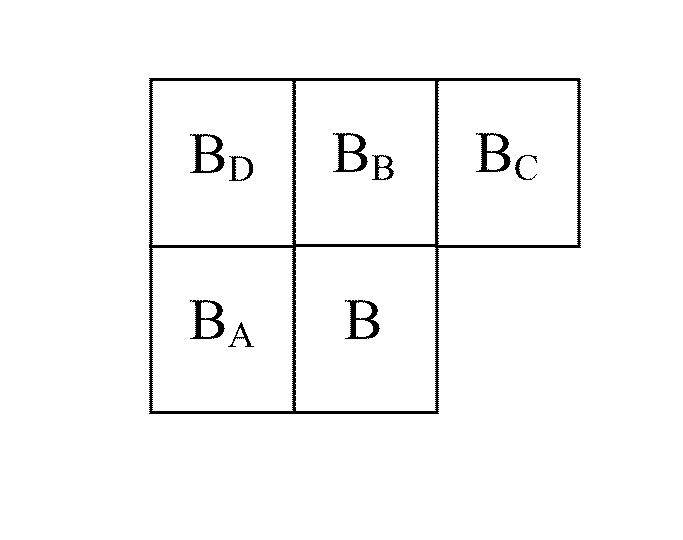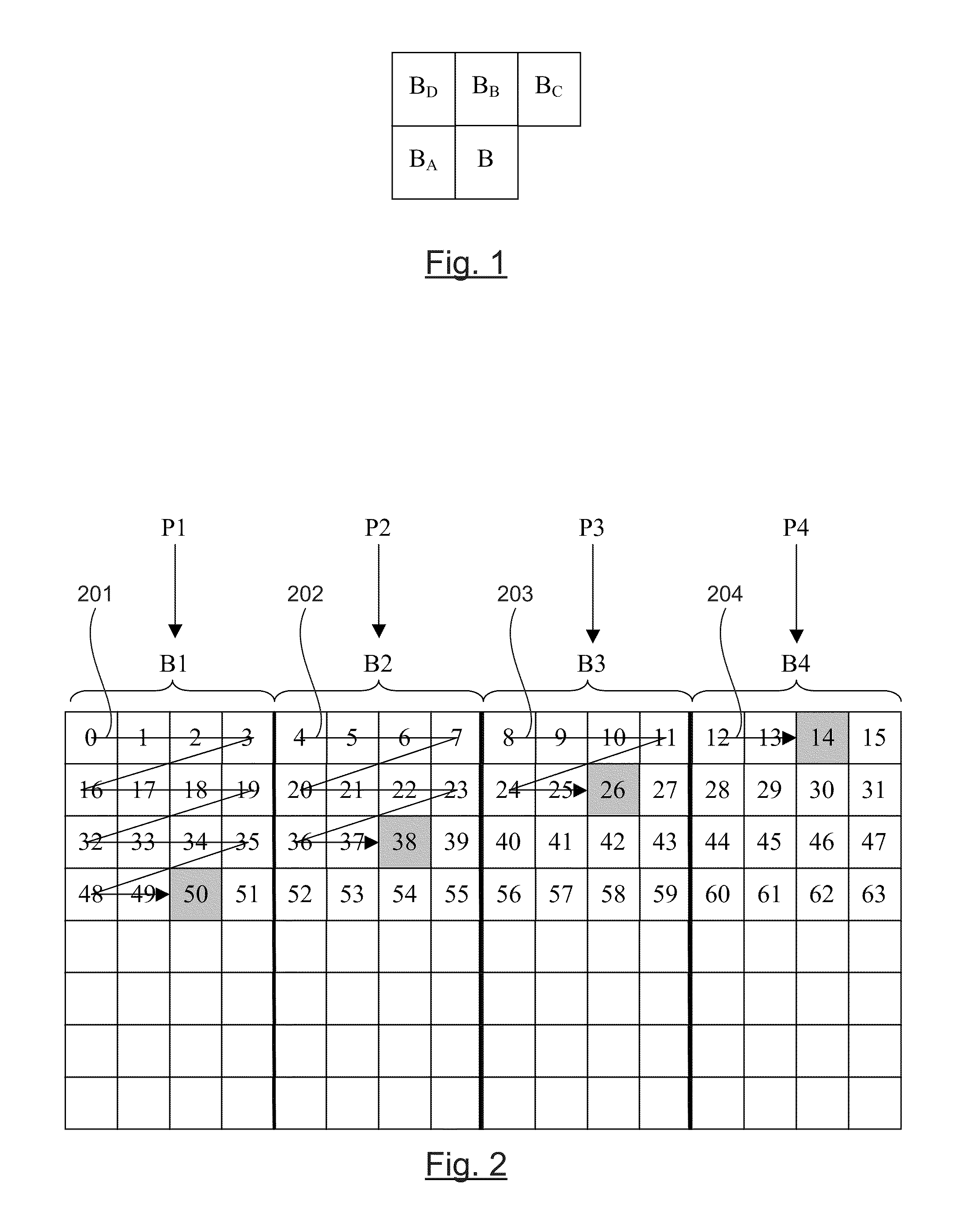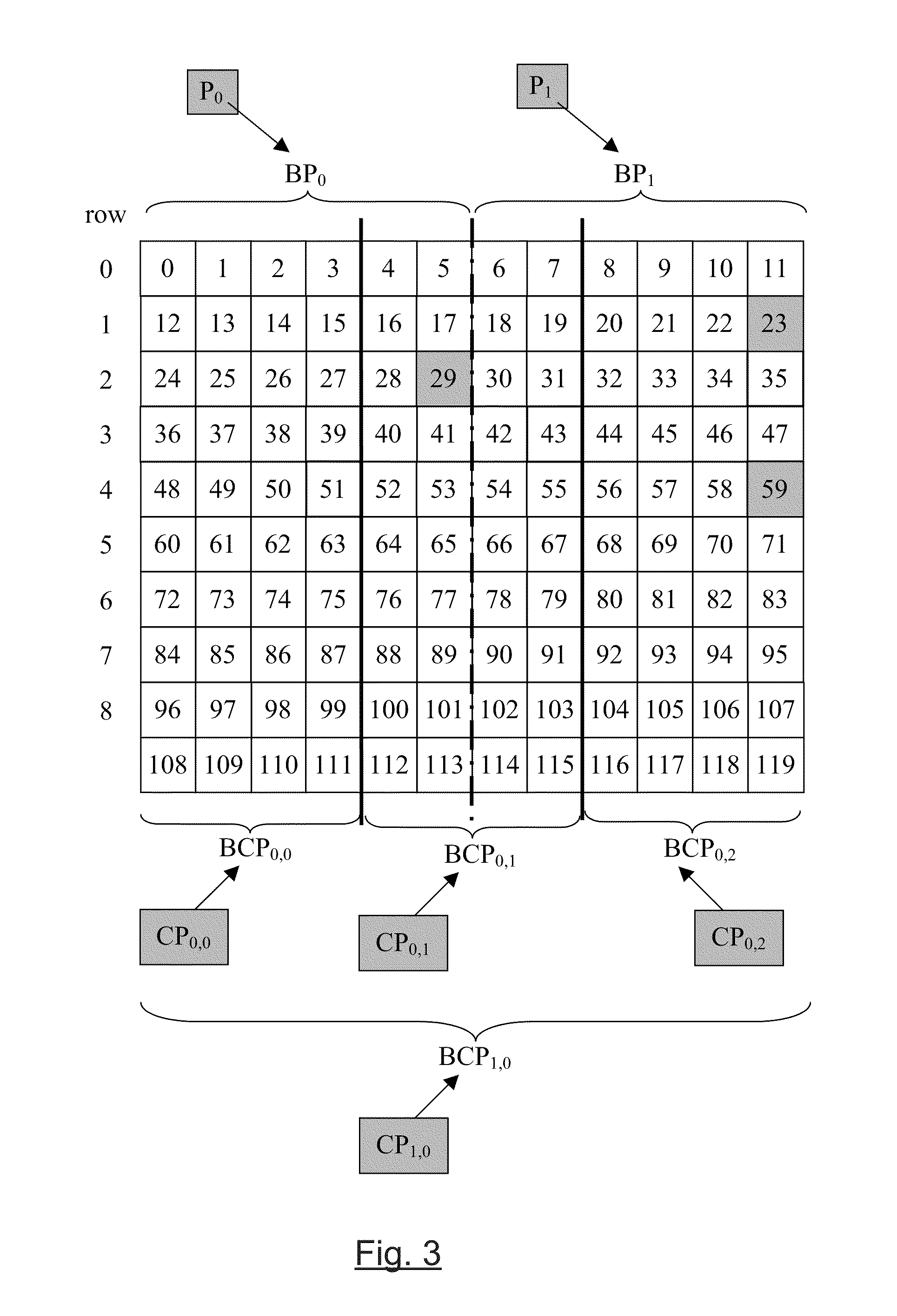Image encoding or decoding method and device, with parallelization of processing over several processors and coprocessors, corresponding computer-readable storage medium
a technology of image encoding and decoding, applied in the field of encoding/decoding digital images, can solve the problems of limiting the encoder performance in compression/quality, the processing of all the blocks of an image via a single processor is not optimal in terms of computing time, and the video encoding is a particularly complex application, so as to avoid any loss of time, optimize exploitation, and achieve optimal compression performance. the effect of optimal level
- Summary
- Abstract
- Description
- Claims
- Application Information
AI Technical Summary
Benefits of technology
Problems solved by technology
Method used
Image
Examples
first embodiment
[0223]FIG. 6 shows the simplified structure of a encoding / decoding device 600 according to a This device includes a communication bus 604 connected to:[0224]A read-only memory (ROM) 602;[0225]a random access memory (RAM) 603; and[0226]a set 601 of N processors (referenced as P0 to PN−1) and M coprocessors (referenced as CP0 to CPM−1), which are distributed over S levels (with N>0, M>0, N+M>2 and S>0, and even N>1, S>0 and M>S).
[0227]The read-only memory 602 stores the executable code of the programs, which, when the programs are executed by the processors and coprocessors, enable implementation of the technique of the disclosure, e.g., according to the embodiment the rules and operation of which are described above in connection with FIGS. 3 to 5.
[0228]Upon initialization, the aforementioned program code instructions are transferred to the random access memory 603 so as to be executed by the processors and coprocessors of the set referenced as 601. The random access memory 603 like...
second embodiment
[0230]FIG. 7 shows the simplified structure of a encoding / decoding device 700 according to a This device includes a communication bus 704 connected to:[0231]a read-only memory (ROM) 702;[0232]a random access memory (RAM) 703;[0233]a set 701 of N processors (referenced as P0 to PN−1) and M coprocessors (referenced as CP0 to CPM−1), which are distributed over S levels (with N>0, M>0, N+M>2 and S>0, and even N>1, S>0 and M>S); and[0234]a supervisory processor 707, which supervises the operation of the set 701 of processors and coprocessors, and, in particular, generates and sends the start messages and verification messages, based on the information provided by the processors and coprocessors of set 701.
[0235]The read-only memory 702 stores the executable code of the programs, which, when the programs are executed by the supervisory processor 707 and the set 701 of processors and coprocessors, enable implementation of the technique of the disclosure, e.g., according to an alternative ...
PUM
 Login to View More
Login to View More Abstract
Description
Claims
Application Information
 Login to View More
Login to View More - R&D
- Intellectual Property
- Life Sciences
- Materials
- Tech Scout
- Unparalleled Data Quality
- Higher Quality Content
- 60% Fewer Hallucinations
Browse by: Latest US Patents, China's latest patents, Technical Efficacy Thesaurus, Application Domain, Technology Topic, Popular Technical Reports.
© 2025 PatSnap. All rights reserved.Legal|Privacy policy|Modern Slavery Act Transparency Statement|Sitemap|About US| Contact US: help@patsnap.com



